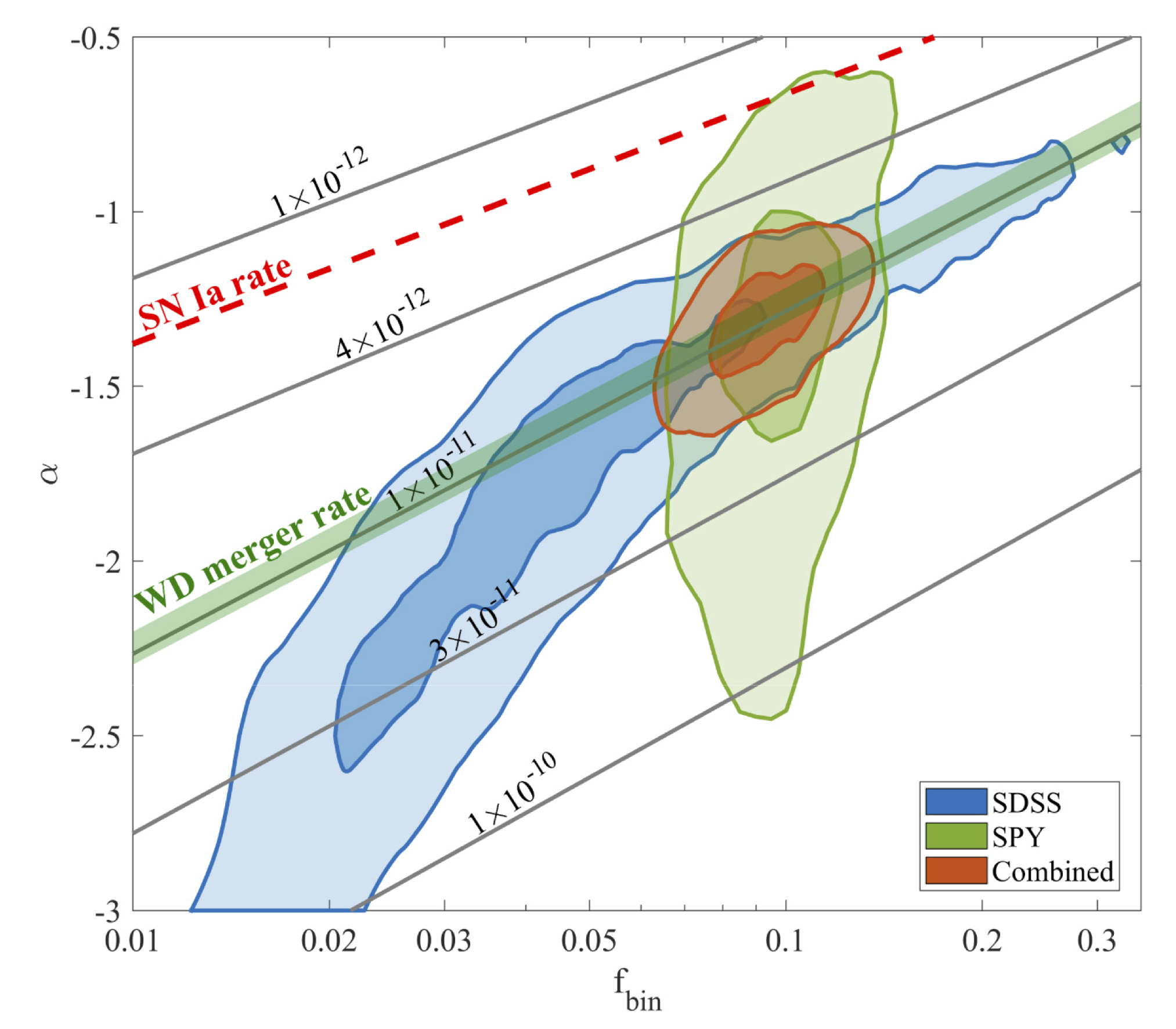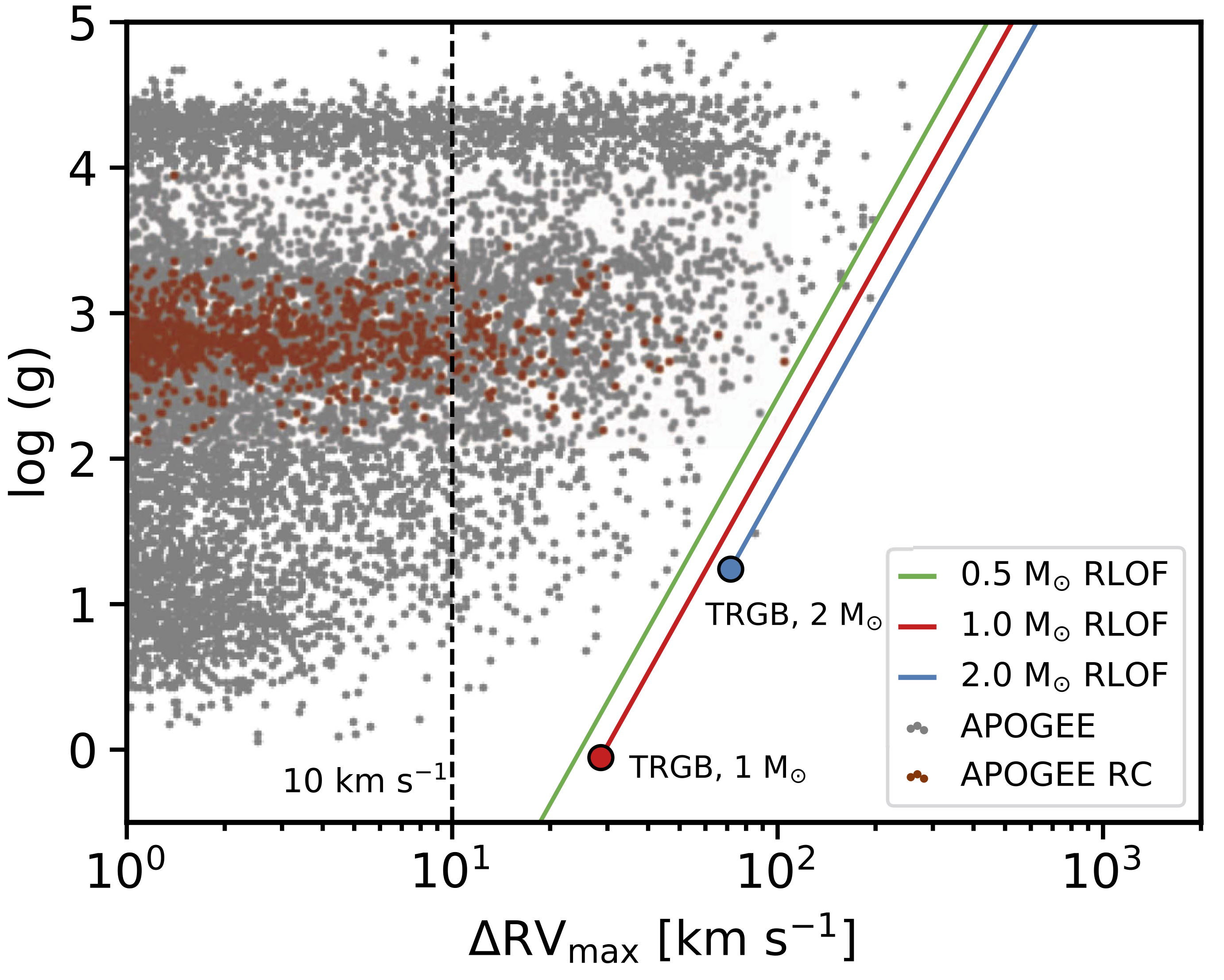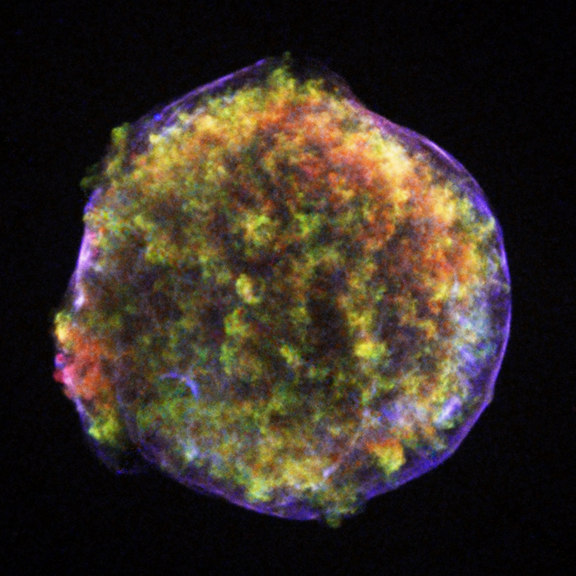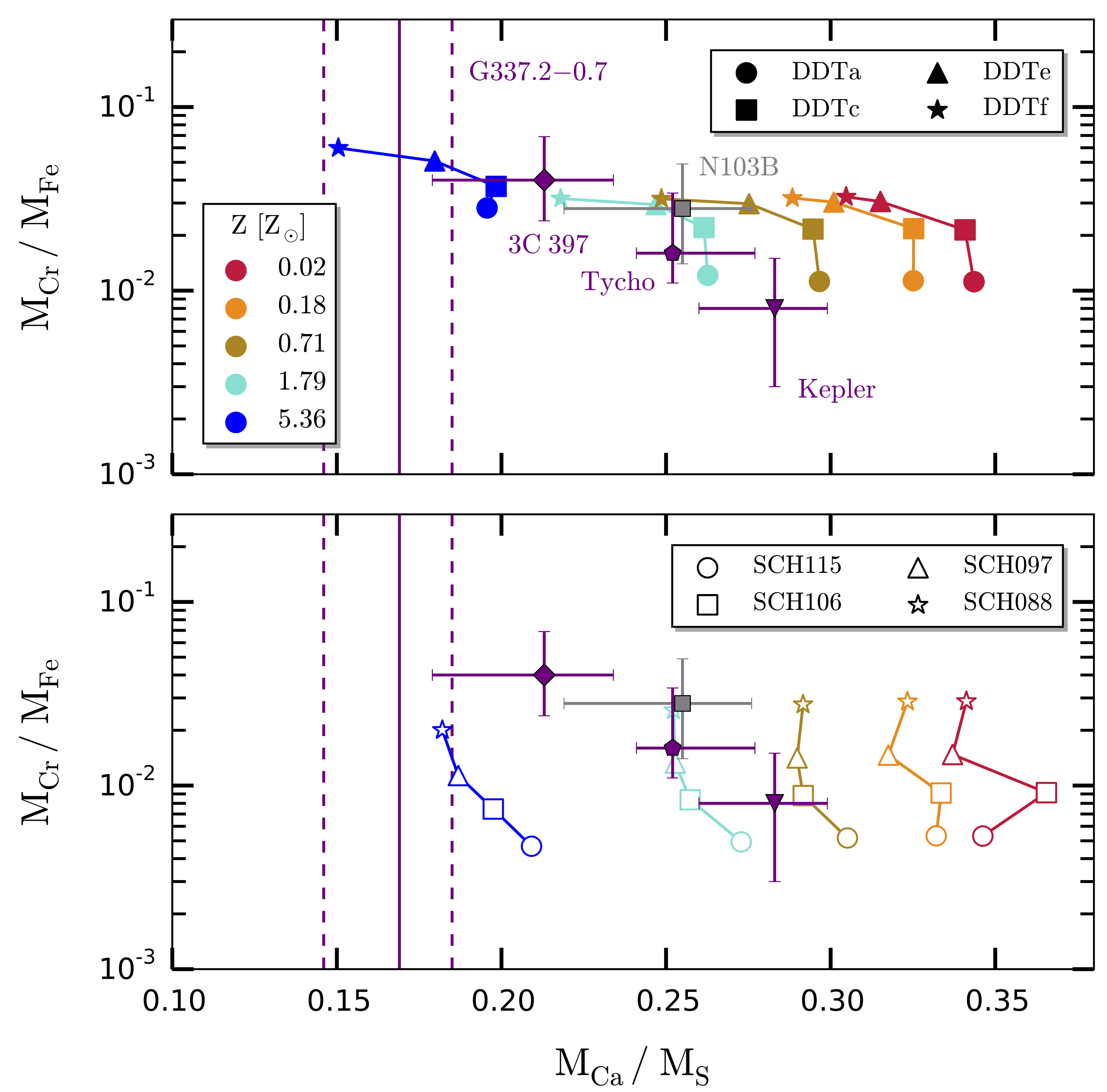Research
Here I list some current and past projects, with the most relevant publications for each of them. If you have questions please email me.
Stellar Multiplicity with the Sloan Digital Sky Survey
The Sloan Digital Sky Survey has collected millions of spectra of individual objects, from quasars to galaxies and stars. Most of these spectra have multiple visits, and it is possible to study them to look for variations in radial velocity (RV) due to the presence of an unseen binary companion. I have been involved in several efforts to use these data to improve our knowledge of stellar multiplicity.
 | White Dwarfs: These degenerate stars are very dense and small - a typical white dwarf is roughly the size of planet Earth. As a consequence, they can be in binary systems with very short periods, sometimes only a few minutes. These short period binary white dwarfs are very interesting because they can be the progenitors of Type Ia supernovae. In 2009, we used time-domain SDSS spectra to discover some of these systems (Badenes et al. 2009b). In 2012, we took these studies one step further, using the statistical properties of thousands of individual radial velocities measured by SDSS (Maoz et al. 2012) to constrain the merger rate of binary white dwarfs in the Milky Way (Badenes & Maoz 2012, see the NSF Press Release). We have recently revised this measurement with new data, concluding that binary white dwarfs merge at a very high rate (Maoz et al. 2018). |
 | Main sequence stars and Red Giants: Thanks to the unprecedented spectral resolution of the APOGEE IR spectrographs in SDSS, we have been able to conduct a systematic exploration of the fundamental statistics of stellar multiplicity and their dependance on stellar properties, from the Main Sequence to the Horizontal Branch. We found that there is a complex relationship between the close binary fraction (that is, the fraction of stars with binary companions in periods of a few years or less) and the chemical composition of stars. The most obvious effect is a strong anti-correlation between the close binary fraction and metallicity - see Badenes et al. 2018 and Moe, Kratter, and Badenes 2019 - but the full picture is more complex Mazzola et al. 2020. Stellar rotation also appears to be strongly correlated with the close binary fraction Mazzola Daher et al. 2022. |
| White Dwarfs with non-White Dwarf companions: I am part of an effort led by Borja Anguiano to catalog and characterize the stars observed by APOGEE that have White Dwarf companions. Check out the initial paper: Anguiano et al. 2022. |
SDSS-V: Thanks to the generous support of the University of Pittsburgh, I am an Associate Member of the fifth installment of SDSS, SDSS-V, which began operations in 2021. This continues the historical involvement of Pitt in SDSS, which started back in 2003. SDSS-V is revolutionizing our knowledge of the stellar content of the Milky Way, so stay tuned for developments!
Supernovae and Supernova Remnants
Supernova Remnants are the end products of Supernova explosions. Observations of SNRs in the Local Group offer a unique view of Supernovae, complementary to optical studies of distant objects.
 | Models for the X-ray Spectra of Type Ia SNRs: Back in 2004, I wrote a PhD thesis on this topic, which you can download here (though most of it is now outdated). In a nutshell, the X-ray spectra of Type Ia SNRs contain a lot of information about the physics of the explosion and the structure of the medium surrounding the progenitor, which are in turn crucial to understand the nature of SN Ia progenitors (see Badenes 2010 for a short review on this topic). Over the years, I have contributed detailed models for several Type Ia SNRs, including Tycho (Badenes et al. 2006), Kepler (Patnaude et al. 2012), and SNR 0509-67.5 in the LMC (Badenes et al. 2008b). |
 | Neutronization in Type Ia SNRs: The abundances of certain elements like Mn, Ni, and Ca are a tracer of the amount of neutronization present in Type Ia SNe during the explosion. This is connected to the properties of the progenitor, in particular the mass of the exploding white dwarf. See Badenes et al. 2008a, Yamaguchi et al. 2015, Martinez-Rodriguez et al. 2017. |
| SNR Populations in the Local Group: The bulk properties of young, X-ray bright SNRs can provide unique insights on the circumstellar interaction of both Type Ia and Core Collapse SNe - see Badenes et al. 2007, Yamaguchi et al. 2014, Court et al. 2023. The resolved stellar populations around SNRs in the Local Group can provide unique insights on the evolutionary timescales of their progenitors - see Badenes et al. 2009a, Maoz & Badenes 2010, Auchettl et al. 2019. | |
| SN Host Galaxies with MUSE and HST: With Lluis Galbany and the AMUSING team, we are collecting IFU spectroscopy and HST imaging of hundreds of SN host galaxies to measure the delay time distribution of both core collapse and Type Ia SNe. |
NEWS: I am proud to announce that I have been selected as one of 20 Guest Scientists for the XRISM X-ray telescope, a Japanese-led X-ray space telescope that will produce spectra with unprecedented spectral resolution.
Prospective Students
If you are interested in any of these research projects, I would be happy to talk to you. If you want to work with me as a graduate student, keep in mind that first you need to be admitted into our Graduate Program. You can find detailed instructions on how to apply here.
Funding
This research is supported by grants from NASA, NSF and the Research Corporation.
